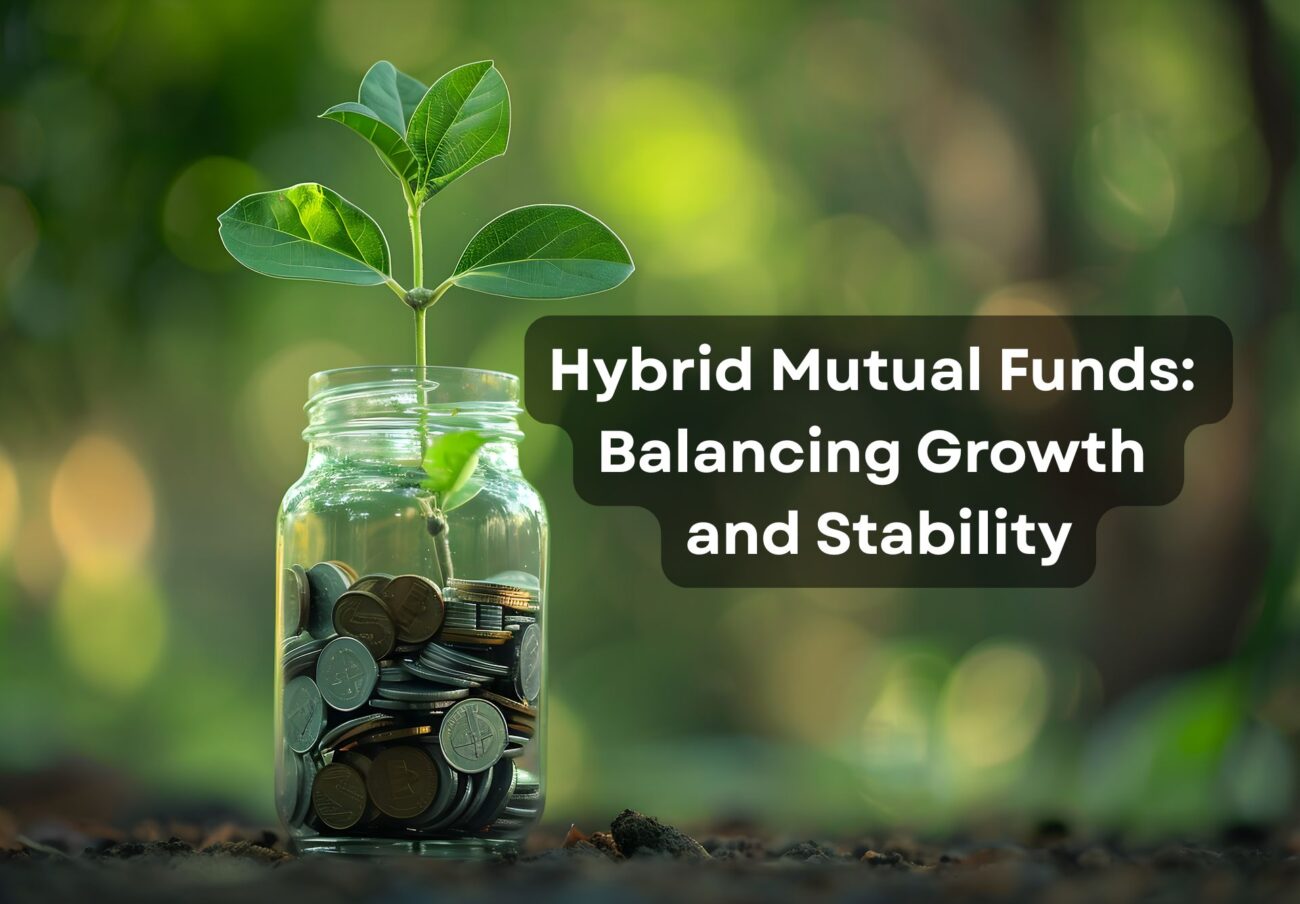When it comes to mutual funds, many investors often find themselves choosing between equity and debt. But what if you could get the best of both worlds? That’s exactly what Hybrid Mutual Funds offer a balanced investment option that combines the high-return potential of equity with the stability of debt.
These funds are perfect for those seeking a moderate risk profile and diversified asset exposure. Let’s dive into the different types of hybrid mutual funds and how they can fit into your financial strategy.
📈 Aggressive Hybrid Funds
Aggressive hybrid funds allocate 65% to 80% of their portfolio to equities, with the remaining portion in debt instruments. This makes them tilted more towards equity, aiming to capture higher growth potential while maintaining some cushion against volatility through fixed-income investments.
Features:
- Ideal for investors with moderate-to-high risk tolerance
- Benefit from long-term capital appreciation
- Usually taxed like equity funds (if equity allocation stays above 65%)
Who Should Invest:
- Young professionals looking to build wealth
- Investors aiming to step into equities cautiously
Risk & Return:
- Returns depend largely on market performance
- Expect moderate volatility with potential for better returns over the long term than pure debt funds
Also Read: Understanding Mutual Funds: Complete Guide to Categories, Investment Goals & Taxation
📉 Conservative Hybrid Funds
In contrast, conservative hybrid funds allocate 75% to 90% in debt instruments and the remaining in equities. These funds aim for steady income with a small equity kicker for capital appreciation.
Features:
- Low risk, relatively stable returns
- Suitable for capital preservation
- Offers limited equity exposure to beat inflation
Who Should Invest:
- Retirees or conservative investors
- Those with short-to-medium term financial goals
Risk & Return:
- Less risky than aggressive hybrids
- Offer better returns than pure debt funds, especially in a rising equity market
🔁 Balanced Advantage Funds (Dynamic Asset Allocation Funds)

Balanced advantage funds are unique in their ability to dynamically switch between equity and debt, depending on market conditions. Fund managers use valuation models and proprietary algorithms to adjust the allocation, aiming to buy low and sell high.
Features:
- No fixed ratio; the mix can swing from 0% to 100% equity
- Aim to reduce drawdowns during market corrections
- Often maintain equity-like taxation (above 65% equity exposure)
Who Should Invest:
- Investors who want to benefit from market timing without active monitoring
- Suitable for both aggressive and conservative investors depending on the fund strategy
Risk & Return:
- Lower drawdowns than pure equity funds
- May underperform in strong bull markets but protect capital better in downturns
🌐 Multi Asset Allocation Funds

As the name suggests, these funds diversify across at least three asset classes, typically equity, debt, and commodities like gold. This structure helps spread risk even further and capitalize on different market cycles.
Features:
- Must invest at least 10% in each asset class
- Reduced portfolio volatility due to non-correlated assets
- Exposure to gold helps during inflationary periods or economic uncertainty
Who Should Invest:
- Ideal for investors looking for maximum diversification
- Those with a medium-term investment horizon (3–5 years)
Risk & Return:
- Lower risk compared to equity-only portfolios
- More resilient during market downturns due to diversification
Advantages of Hybrid Mutual Funds
- Diversification: Minimize risks by investing across multiple asset types
- Risk-adjusted returns: Balance growth with safety
- Ease of access: Professional fund management handles the asset allocation
- Tax benefits: Many hybrids are treated as equity for tax if the allocation exceeds 65% equity
- Dynamic adjustment: Balanced advantage funds handle rebalancing automatically
How to Choose the Right Hybrid Fund
- Investment horizon: Choose aggressive hybrids for long-term, conservative hybrids for short-term goals
- Risk appetite: Align with your comfort level with market volatility
- Return expectations: Balanced advantage and aggressive funds offer higher returns, conservative funds are safer
- Taxation: Look for equity-like tax treatment if that’s beneficial
Final Thoughts
Hybrid mutual funds offer a smart way to navigate market uncertainties. Whether you’re a first-time investor or a seasoned one, there’s a hybrid fund that aligns with your goals and risk tolerance. Just ensure to review the fund’s track record, fund manager’s strategy, and asset mix before investing.
You might like this: How to Turn 1 Lakh into 50 Lakh Through Mutual Fund Lumpsum Investment
❓ FAQs:

- What are hybrid mutual funds? Hybrid mutual funds invest in both equity and debt instruments to balance risk and return.
- Are hybrid funds good for beginners? Yes, especially conservative or balanced advantage funds, which offer stability and moderate growth.
- Which is better: aggressive or conservative hybrid fund? It depends on your risk tolerance and investment horizon.
- What is the tax treatment of hybrid mutual funds? If equity allocation exceeds 65%, they are taxed like equity funds.
- Can I get monthly income from hybrid funds? Yes, via SWP (Systematic Withdrawal Plans) or dividend payouts.
- How are balanced advantage funds different from aggressive hybrids? Balanced advantage funds dynamically change the equity-debt mix; aggressive hybrids have a fixed range.
- What is the risk level in hybrid mutual funds? Ranges from low (conservative) to moderate (aggressive), depending on asset allocation.
- Do hybrid funds outperform pure equity or debt funds? Not necessarily, but they offer better risk-adjusted returns in volatile markets.
- Are multi-asset funds better than regular hybrids? They offer broader diversification but may have slightly lower returns due to gold exposure.
- How long should I invest in hybrid mutual funds? Ideally 3 to 5 years or more, depending on the type of fund chosen.
⚠️ Disclaimer:
Investing in mutual funds is subject to market risks. Read all scheme-related documents carefully. Past performance is not indicative of future results. Please consult your financial advisor before making any investment decisions.

